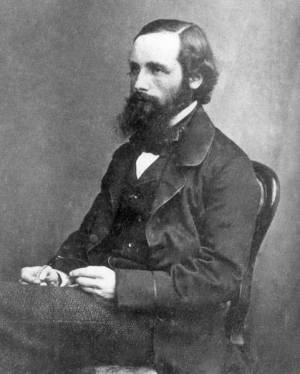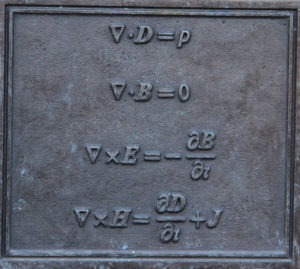
James Clerk Maxwell (1831 – 1879) was a British scientist famous for his mathematical synthesis of the forces of electricity and magnetism into what is now known as the electromagnetic force. He is one of the most important figures in the history of physics.
Maxwell was born in Dumfrieshire, Scotland where he received an early education from his mother until she passed away when Maxwell was eight. A short time later he was enrolled at Edinburgh Academy where he excelled in mathematics. In April of 1847 Maxwell’s uncle took him on a trip to the private laboratory of physicist William Nicol where he was captivated by the experiments and demonstrations he witnessed and was determined thereafter to become a physicist. He entered Cambridge University three years later, earned top honors in mathematics, and after graduating became a professor in King’s College, London.
It was during his time as a professor at King’s College that he began formulating his theory of electromagnetism. Electric fields changing in magnitude create a magnetic field. Additionally magnetic fields changing in magnitude creates an electric field. Thus these fields moving together as a wave can create a continuous chain of creating. Maxwell realized that he could combine both the magnetic and electric fields into a single electromagnetic field through a series of equations, which we now refer to as the Maxwell equations. When Maxwell calculated the speed of these waves he obtained 186,000 miles per second, and so in 1864 he was able to conclude that light consists of electromagnetic waves. Eventually it was realized that light consists of only a small portion of the electromagnetic wave field with longer and shorter wave lengths being possible, eventually leading to discoveries such as radio waves and x-rays.

Maxwell also did other important work in optics. He presented the first color image in photography during a lecture in 1861, the same year he was elected the the Royal Society of London. In 1874 he was appointed director of the Cavendish Laboratory. However he did not hold this position long as he died five years later at the age of 48 due to stomach cancer. Even though his life was cut short his accomplishments and contributions to science were immense.